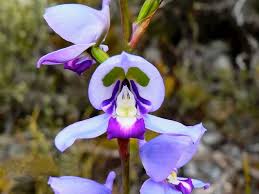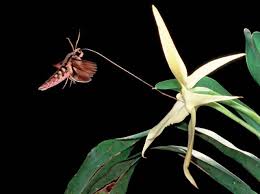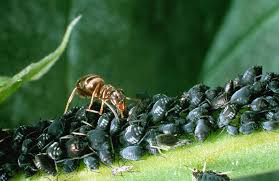The Paradox of Mutualism
yuval bloch
Ever felt your productivity slip because of constant interruptions or misaligned priorities? Do persistent, off-track questions from colleagues sabotage your focus, or has your boss’s direction seemed to pull you away from the path you know is right?
Working collaboratively is inherently challenging. For a long time, scientists viewed Mutualism—the collaboration between different species that benefits both—as an evolutionary anomaly, predicting it would be exceedingly rare. Why would two organisms go out of their way to help one another when they could focus purely on themselves?
However, recent studies have revealed a surprising reality: Mutualism is remarkably prevalent.
Today, we’ll delve into the inherent challenges of Mutualism in Nature and explore the ingenious ways these collaborative problems have been successfully overcome through evolution. 🌿

The Cheater Problem
Some of the problems ecologists observe in natural multicellular interactions will look familiar to many of you from your personal or professional life. For example, think of your college roommate who refuses to clean; in ecology, this is known as the cheater problem.
Imagine a simple mutualistic system involving two bacterial species, Species A and Species B. Each species requires two nutrients to survive, and over time, they evolve a division of labor: Species A produces Substance 1, and Species B produces Substance 2. This arrangement is highly efficient; neither species needs the complex genetic machinery required to synthesize both substances, saving them significant energy and DNA.
The problem arises when a cheater mutant appears.
Suppose a bacterium in Species B undergoes a mutation, creating a new line, Species C, which loses the gene for Substance 2. As long as the mutualists (A and B) are still present, Species C is free to consume the shared resources—Substance 1 from A and Substance 2 from Species B—without producing anything in return.
Because Species C has shorter, more streamlined DNA, it is metabolically more efficient than Species B and can rapidly outcompete it. If Species B is completely driven to extinction, the entire system collapses, as Species A loses its source for Substance 2, and the cheaters (C) lose their environment. This is the inherent instability of collaboration.
The Black Queen Hypothesis
This evolutionary pressure is central to the Black Queen Hypothesis. It describes a system where the loss of a costly public good gene (like the one for Substance 2) becomes evolutionarily advantageous for an individual because others are still producing it. This creates a powerful drive for individuals to be the first to ‘cheat’ and drop the costly public service gene.
This behavior is widespread. For example, some deceptive flowers do not produce nectar. Instead, they mimic flowers that do, luring insects to provide free pollination service. As long as enough honest flowers exist, the insect keeps coming, giving the deceiver a significant evolutionary advantage.

Similar behavior can be observed within our own bodies. While all cells should work together, a mutation in one cell can allow it to reproduce without regard for the others, leading to uncontrolled proliferation—the process we call cancer.
It becomes clear why Mutualism puzzled scientists; a mutualistic system appears extremely sensitive to new mutations. But it’s not the only problem.
The Mathematical Challenge
Let’s look at the three core types of interaction, defined by how the reproduction rate of one species changes when another is present:
- Competition ( –, –): Both species suffer.
- Predation/Parasitism ( –, +): One benefits, the other suffers.
- Mutualism ( +, +): Both benefit.
Mathematically, predation keeps a system stable. If the predator population (sp2) increases, the prey (sp1) decreases, which in turn causes the predator (sp2) to decrease; they naturally balance each other.
Competition might cause one species to become extinct, but the other will flourish.
Mutualism, on the other hand, is a clear destabilizer in this simple model. If the population of Species 1 decreases, it leads to a decrease in Species 2 (its partner), which means there is less of Species 2 to support Species 1, and so on, until both species are extinct. If you have a chain of mutualistic species, the entire ecosystem can collapse from a single perturbation.
explaining the miracle
And yet, somehow, Mutualism works. It is common in almost every ecosystem, creating a remarkable diversity of life—from Darwin’s Orchid, which evolved a strange, deep structure that allows only one type of moth to successfully pollinate it, to the Black Garden Ants that farm aphids for their honeydew, and the fungi at the roots of plants that exchange nutrients.

How can we explain this paradox?
Stability is often achieved not through equilibrium, but through constant interaction and regulation.
Let’s return to our two bacterial species. The cheater (Species C) drives the community to collapse and eventually goes extinct itself. However, the honest partners (A and B) can exist in other, separate “patches.” These patches of cooperation survive and can recolonize the collapsed area.
Over time, this pressure selects for versions of Species A and B that developed a form of regulation, preventing the cheater mutation from successfully emerging or actively killing individuals that pass it on. This regulation provides an overwhelming evolutionary advantage to the cooperative partners.
In the example of the deceptive flower, what we actually see is an evolutionary arms race. The insect will improve at recognizing the deceiver, and the flower will enhance its disguise, making it increasingly costly and reducing the cheater’s evolutionary advantage.
Finally, we must remember that ecosystems are not made of just two species. In the last decade, researchers using complex models based on random matrix theory discovered that in diverse ecosystems, a specific balance of antagonistic (competition/predation) and mutualistic interactions often creates the highest level of stability. When mutualistic interactions are a just part of the system’s total interactions, the interaction becomes a stabilizer rather than a destabilizer.
Looking at both the challenges and the solutions evolution gives to allowing species to cooperate, it is clear how much more complex the world is than we imagine.

The Complex Reality of Nature
We often frame Nature through two radical, opposing lenses:
- Perfect Harmony: A universe of cooperation, where every element exists in delicate, mutual dependence. It’s the comforting, loving world we often teach our children.
- Ceaseless Combat: A brutal, eat-or-be-eaten realm, a cruel, zero-sum game of unceasing, individualistic competition—a view often borrowed from a human ideology.
The truth is, Nature doesn’t need to conform to our political or moral imagination. No single force drives evolution. While competition and predation are undeniable engines, so too are Mutualism and coevolution. Sometimes the process sculpts stable harmonies; sometimes it just collapses. The reality is neither a fairy tale nor a war zone—it’s all of the above, all at once.
So, the next time someone in your workplace drives you mad, remember: there are many ways to stabilize a mutualistic interaction. You may not have a few million years of coevolution to solve it, but Nature proves that collaboration, though inherently fragile, is one of the most powerful forces for long-term success.